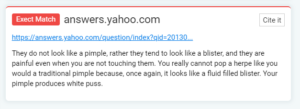Plagiarism is a common problem in eLearning. Students fear the consequences of high plagiarism scores, while teachers struggle to identify the authenticity of their students’ work. To address this issue, anti-plagiarism software tools have appeared in the market.
One of the main issues that online students and tutors face today, especially when it comes to academic eLearning, is the issue of plagiarism, which means copying other people’s work. If you think anti-plagiarism software are useless or ineffective, then do reconsider.
It is true that the concept of eLearning is expanding all around the world while as schools and education systems are getting associated with it. While eLearning offers many advantages it also faces some issues. Educators report that many students tend to use information without citing the author of the original source, or they simply copy-paste parts of other people’s work.
Writing something unique can be hard, therefore a plagiarism-free assignment can be difficult for students. Even if they do cite, or rephrase the original content, the tools that institutions have to test the level of plagiarism for an assignment are really strict requiring a high level of originality. Thankfully, the advancement of the Internet has made it easier to review the content before submitting the assignment with the plagiarism checker tools.
What is plagiarism and why is so problematic
The Internet is full of content and resources for different things. If the Internet is utilized in the right way, then there are multiple ways to avail the opportunity. For example, one can look for online researches, academic papers, blogs, tutorials, images, and other content. Therefore, they can be used by people to understand a concept, grasp an idea or even find inspiration. The problem starts when someone copies them word-by-word, therefore creating plagiarized content.
Plagiarism can be problematic, slowing down one’s way to success because of the consequence that you might face. Many students who perform low on anti-plagiarism checking, might face expelling from the university if the policies are strict towards that serious issue. So, what if a student who wants to play the right way, submits a paper of low score? How can one test the score of his/her writings beforehand?
Why should a student use anti-plagiarism software in eLearning?
Thankfully, some tools that help students counter the issue of plagiarism have started to appear. This anti-plagiarism software and can be really handy when it comes to eLearning.
Plagiarism issues
Many plagiarism checkers are available free of cost and you can use them anytime without any restriction. Universities have adopted strict policies if they detect the plagiarism phenomenon. Consequently, students are strongly advised to check their paper/work before submitting it.
Citation issues
In addition, If the tool is showing plagiarism in an assignment, then this means that the student may not be aware of how to properly cite. This way, instead of checking the citations manually one by one, the person can automatically find out if the citation is correct. After all, citing the references the right way will free a paper from plagiarism.
For instance, take a look at this plagiarism checker free for students , which can be used online and without the demand for a payment in return. Plagiarism checkers are not only useful for students but also for teachers.
 Why should an educator use anti-plagiarism software in eLearning?
Why should an educator use anti-plagiarism software in eLearning?
Plagiarism checkers are responsible in analysing the uniqueness of the content that is used. What happens is that the assignment one submits to such a tool is then compared with other assignments stored in databases all around the world. This is pretty useful for teachers.
Plagiarism issues
Educators usually use Plagiarism checkers to identify whether the papers/works they received are a subject of copyrighted work. Advanced plagiarism checkers can bulk test assignments at the same time, thus analysing multiple students’ work at the same time.
Citation Issues
It is also common that some teachers tend to distribute online course material, which also may be prone to copyright and plagiarism. As mentioned before, these tools can be really helpful in terms of citation too.
Conclusion
Think of the time when there was no way to check one’s work. Teachers weren’t able to check the originality of the content they received. Today, with the adoption of anti-plagiarism tools and plagiarism checkers, students can find out the originality of their work, before submitting it. On the other hand, teachers can verify that the content they have received is authentic and therefore valid. This way they save themselves precious time for other things rather than academic paperwork.
Original text edited by Theodosis Karageorgakis
